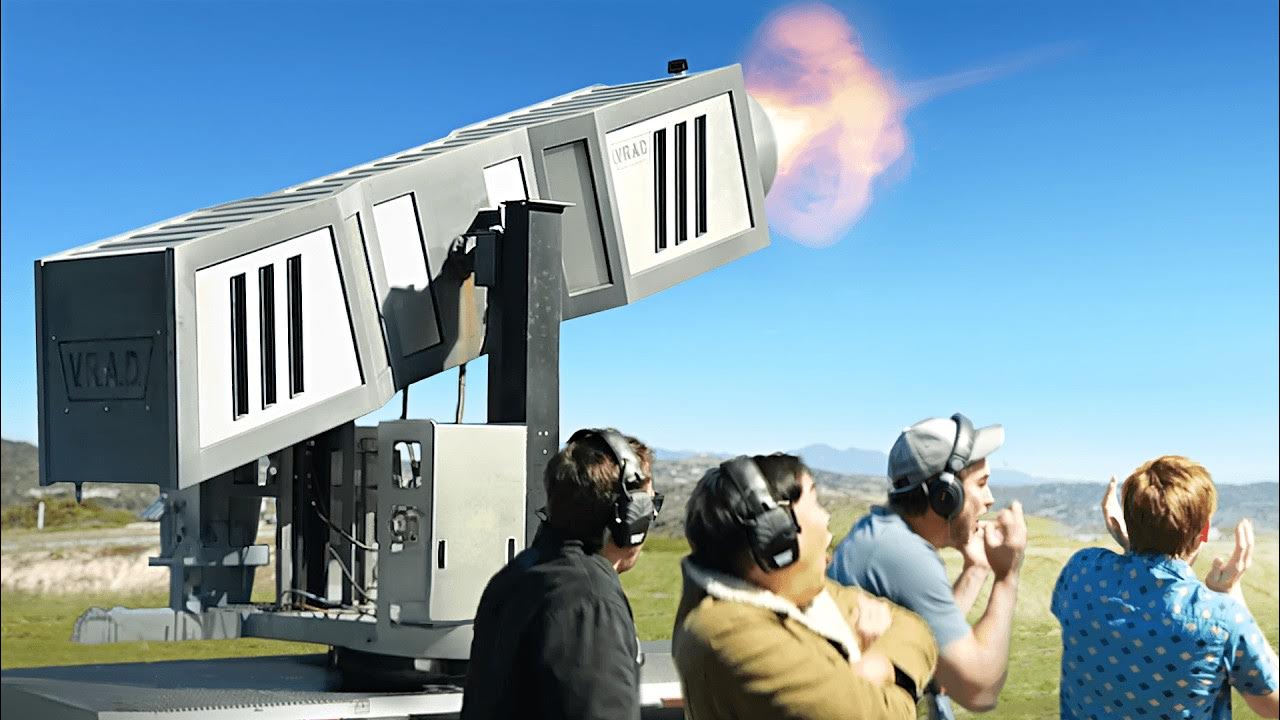I’ve enjoyed Mark Rober’s videos for a while now. They are fun, touch on accessible topics, and have decent production value. But this recent video isn’t sitting right with me
The video is here: https://www.youtube.com/watch?v=SrGENEXocJU
In it, he talks about a few techniques for how to take down “bad guy drones”, the problems with each, and then shows off the drone tech by Anduril as a solution.
Anduril aims to sell the U.S. Department of Defense technology, including artificial intelligence and robotics. Anduril’s major products include unmanned aerial systems (UAS), counter-UAS (CUAS), semi-portable autonomous surveillance systems, and networked command and control software.
In the video, the Anduril product is a heavy drone that uses kinetic energy to destroy other drones (by flying into them). Quoting the person in the video:
imagine a children’s bowling ball thrown at twice as fast as a major league baseball fastball, that’s what it’s like getting hit by Anvil
This technology is scary for obvious reasons, especially in the wrong hands. What I also don’t like is how Mark Rober’s content is aimed at children, and this video includes a large segment advertising the children’s products he is selling. Despite that, he is promoting military technology with serious ethical implications.
There’s even a section in the video where they show off the Roadrunner, compare it against the patriot missiles, and loosely tie it in to defending against drones. While the Anvil could be used to hurt people, at least it is designed for small flying drones. The Roadrunner is not:
The Roadrunner is a 6 ft (1.8 m)-long twin turbojet-powered delta-winged craft capable of high subsonic speeds and extreme maneuverability. Company officials describe it as somewhere between an autonomous drone and a reusable missile. The basic version can be fitted with modular payloads such as intelligence and reconnaissance sensors. The Roadrunner-M has an explosive warhead to intercept UAS, cruise missiles, and manned aircraft.



You shoot much?
I have to think no because then you’d know how difficult it is to hit a stationary target and then be able to extrapolate that to one that moves and changes direction on a dime in 3 dimensions.
Then you’d also consider what’s happening to the projectiles that inevitably miss even in a computerized targeting system.
Admittedly not, no. I was making the assumption, possibly a naive one, that a computer should be capable of understanding the physics behind bullet trajectories well enough to shoot accurately even if the target is mobile.
You should check out some videos of CIWS (Close In Weapon Systems) in action. They’re systems designed to shoot down projectiles like missiles and mortar rounds (as well as targeting small vehicles and planes). The sheer number of rounds they spray to take out a target that is moving on a single ballistic trajectory is crazy.
The closest thing I know of to what you’re talking about would be hard-kill APS (Active Protection Systems). These are systems designed to protect vehicles like tanks from incoming rounds and missiles. Using radar and optical sensors, they can detect a round and predict whether or not it’s going to hit the vehicle and respond in nanoseconds, firing an explosive back at a target traveling 1-2km per second. However, this isn’t like shooting a bullet out of the air with another bullet. It’s more like chucking a grenade at a missile to either deflect it or destroy enough of it that the pieces (still going 1-2km/s) don’t damage the vehicle.
But both of these systems are designed mainly for destroying targets on a ballistic trajectory. When you throw drones into the mix, now you have a target that can react to your reaction. With slower moving drones like the helicopter ones, that’s easy enough. But what about a drone that’s moving at mach 2 and capable of sustaining 20g’s, like a missile. Now you’re talking about basically firing missiles at missiles, which has proven to be very difficult before a missile has spent its fuel and is coasting towards its target on its final ballistic trajectory.
At range sure, nearby though an open choke shotgun would be pretty viable. Skeet shooting has been a thing for a while and unless it can change direction between the trigger and the pellets reaching it the drone’s likely at least impaired.
How nearby is nearby though? And, in the context of the proposed use case for defending a crowded stadium in a populated area, does this put people down range as well that could also be impaired by the pellets?
Crowded spaces it’s a problem, I was more talking to notion of just plain shooting them rather than a use case. A rifle would be dang near impossible, but a scattered spray, you really only need to stop one prop and it’s probably on the ground for a standard 4 prop deal. At least mine got real screwy when a blade split mid flight.
Skeet/trap shooting was designed around duck hunting. Ducks aren’t particularly acrobatic flyers. Even fat, heavy quadcopters like off the shelf DJI stuff can do some impressive maneuvers, and purpose built racing quads are wicked. If the operator tries a little to do some evasive maneuvers, or the autopilot has it programmed in, it’s going to be very hard to shoot down.
Shotguns also aren’t common on the battlefield. They’re not that useful for typical army engagement ranges. Navy vessels do use them for boarding actions, but you usually won’t find them in armies.
Here is an alternative Piped link(s):
off the shelf DJI stuff
Piped is a privacy-respecting open-source alternative frontend to YouTube.
I’m open-source; check me out at GitHub.